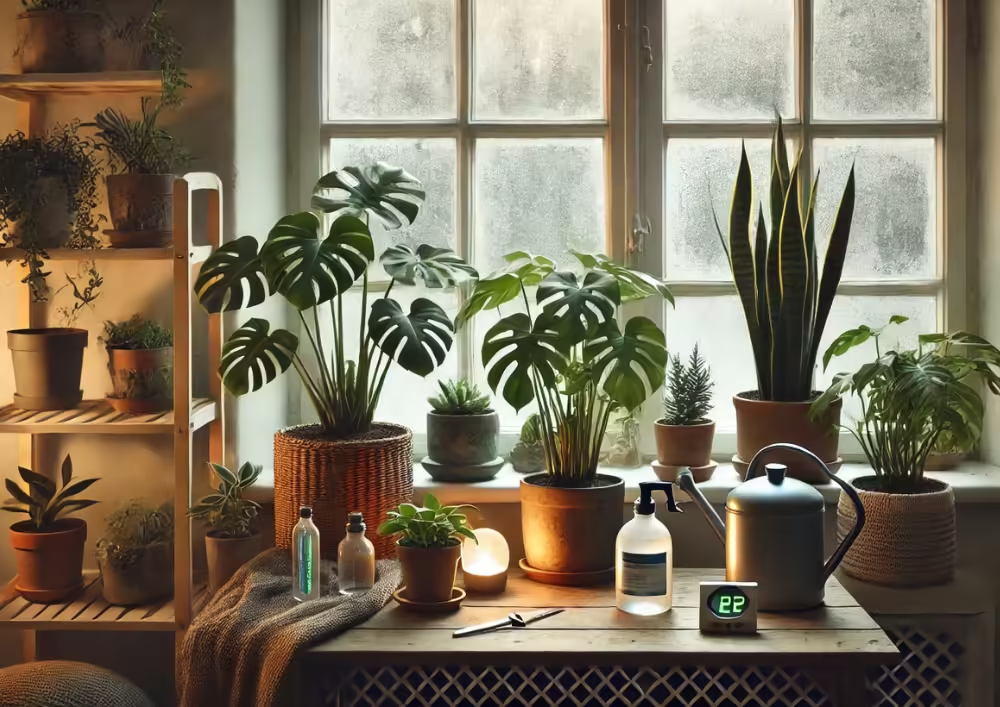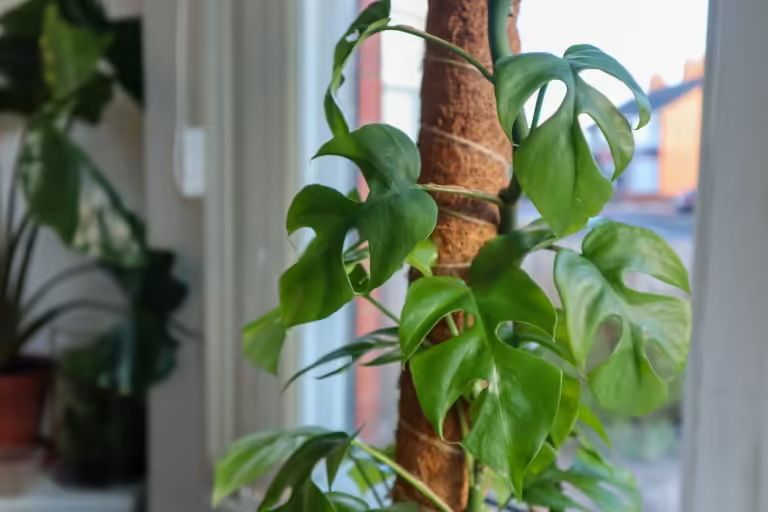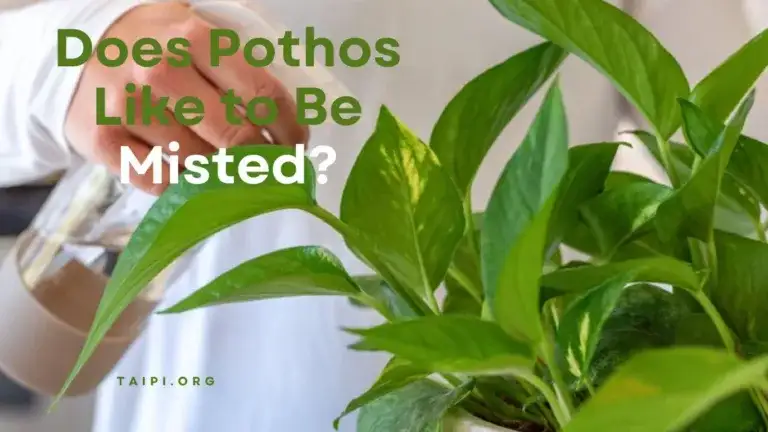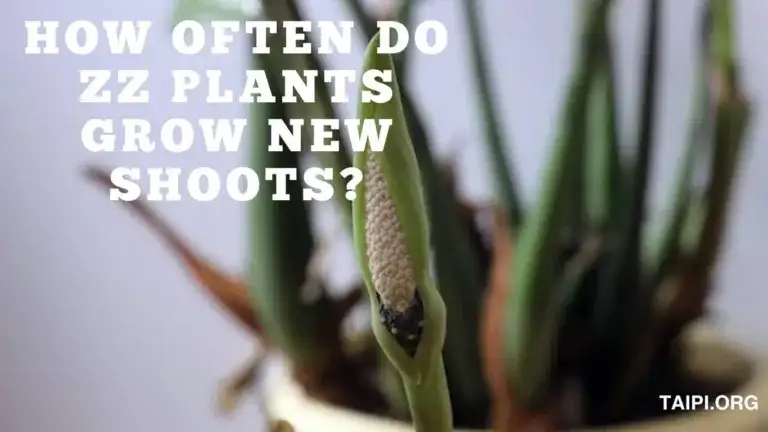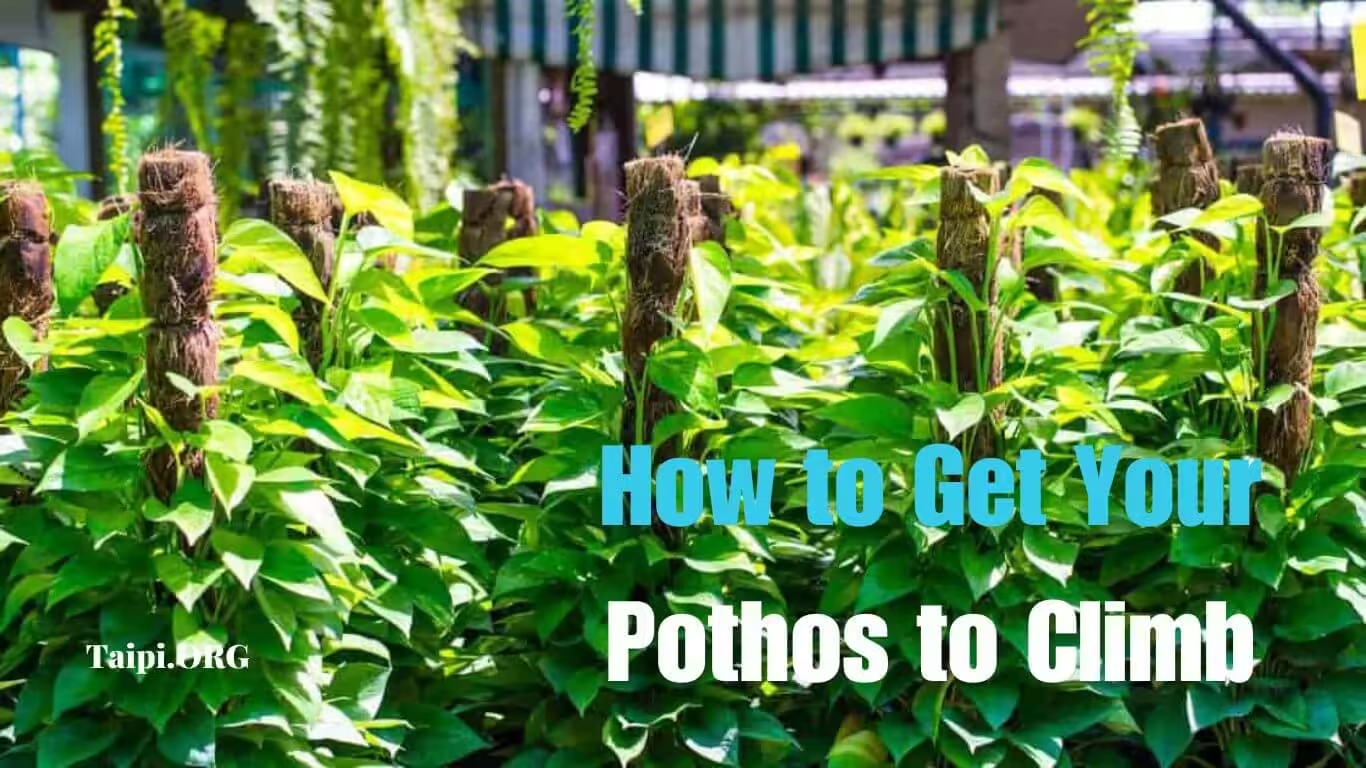7 Must-Know Tips for your Indoor Plants During Winter Months
The creasing light levels of ultimate winter are queues for house plants that go into a dormant phase so it’s important to care for your plants correctly to allow them to do this.
Continuing to care for your plant In the winter as you do in the summer, will lead to various problems for your plants that will not set them up well for next spring.
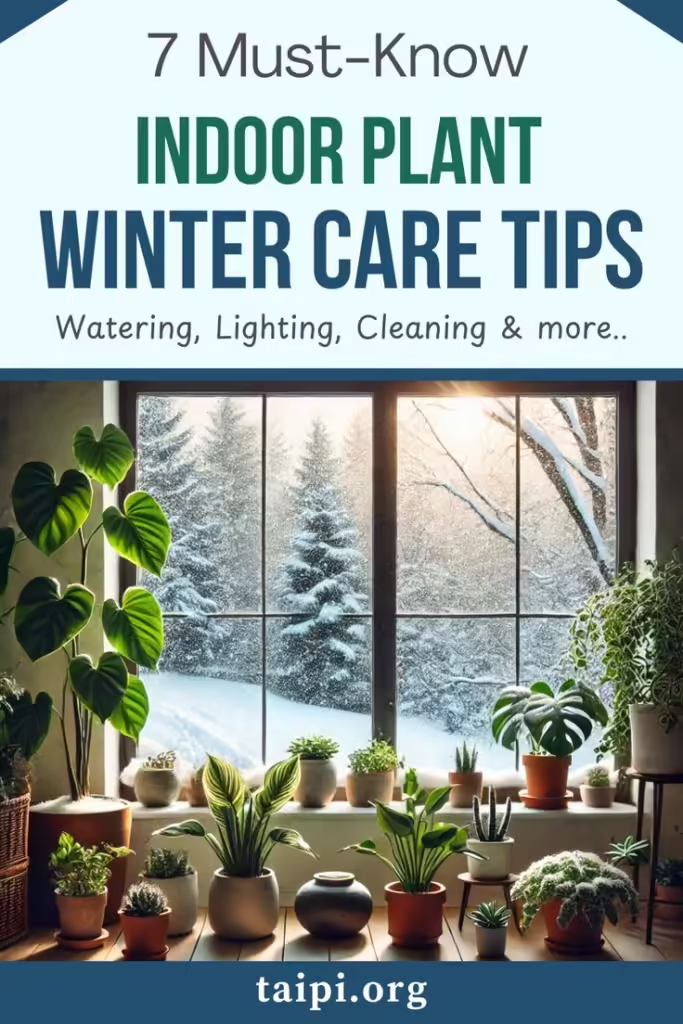
In this article, we are going to learn about 7 tips that are essential to follow in wintertime. These tips will help you to keep your plant alive & see a healthy plant after the winter ends.
1. Proper watering technique
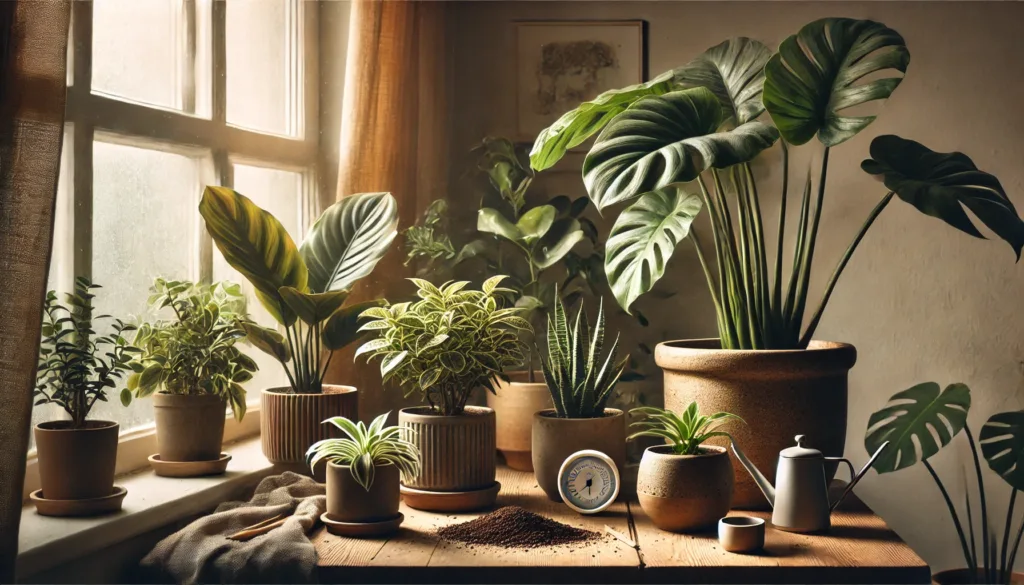
A proper watering technique is crucial for happy houseplants. This is even more important in the autumn and winter when the risks of over-watering plants are much higher. Plants dry out much quicker in the summer when the weather is warmer so a plant will forgive you for giving it too much water every once in a while.
The plant will have no problem bouncing back because the weather is on its side and the side of the plant will be able to dry out.
You may be water in your plant once a week during the spring and summer and it may be thriving under this schedule. But if you continue to water once a week in the winter the plant will likely suffer from overwatering.
This will not allow the soil of your plant to dry out before you’re giving it more water. So the soil is constantly saturated & which leads to root rot and eventual plant death.
I usually water my regular house plants like my Philadelphia, Ficus plants, and tradiscansias every week during the summer. I dial this back once every two or three weeks in the winter.
I water my succulents once every two or three weeks in the summer and then once a month or longer during the winter.
The most important thing though is to never water your plant without checking the soil first. To check the soil, stick your finger two inches deep into the soil of the plant. If it feels wet leave it a few days and check again. You want the soil to feel dry before watering.
I use my trusty moisture meter to check the level of moisture in the soil. This is a real game changer for plant care.
Overwater in your plants can result in issues such as yellowing leaves and brown tips on the leaves. This is because the roots are pushing too much moisture into the leaves and the leaf cells are bursting resulting in damaged Leaf tissue.
You will also experience some Leaf Drops in the plant because the stems and leaves have too much water and turn limp and the leaves eventually fall off the plant.
So the remedy is to an overwatered plant in the winter, take the plant out of the pot and remove the wet soil & inspect the roots and cut away any that look black and then re-part into some fresh soil. The plant should bounce back.
Read More – 12 Common Mistakes that Damage Your House Plant
2. Move Closer to the light
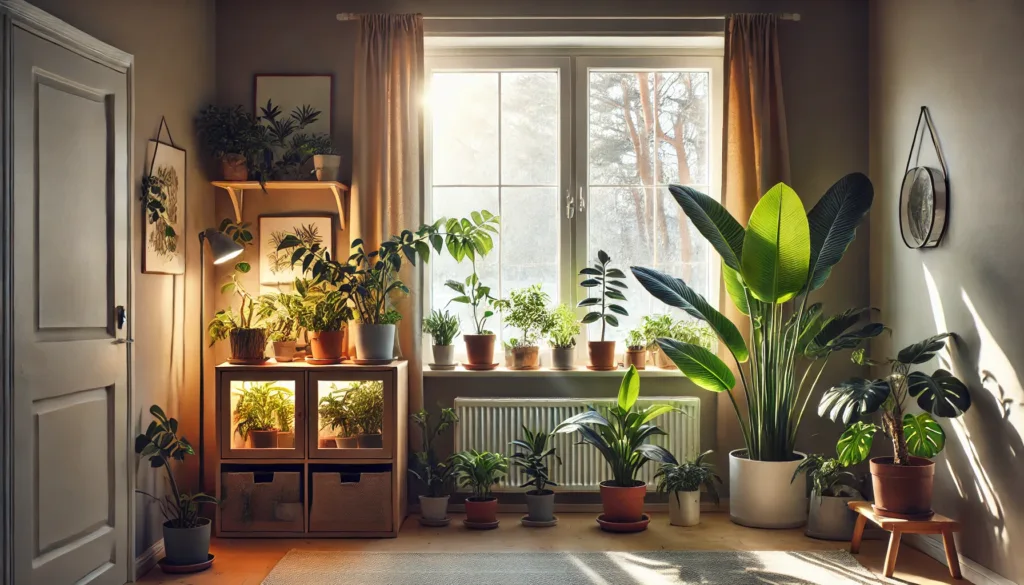
The days get shorter and the light weaker in the winter and this can be problematic for the tropical plants in your home.
The majority of your indoor plants hail from the forest floor of the tropical rainforest where they get consistent light warmth and humidity all year round.
Keeping our plants indoors during the winter protects them from harsh temperatures. But the change in light can lead to fussy plants. This is where you may want to move a few of your fussier plants closer to the window.
I found that my Ficus plants appreciate being in as bright a spot in my home as possible during the winter. I used to keep my Ficus Elastico my bedroom upstairs & it only got medium light at best. Eventually, this led to Droopy leaves and slow growth. Then, I moved it downstairs next to my east-facing window where it gets about five hours of good Sheffield Sun every single day. As a result, it really perked up.
One great hack to boost the growth of your house plants over the winter is to use grow lights to supplement the light from the sun. Grow lights are a fantastic resource for plant parents. Because they do an excellent job of replicating the light from our sun that plants can use for growth.
They won’t be tempted to stick any old lead into a lamp and shine them over your plants expecting them to grow like mad. this won’t work. Normal LEDs don’t have enough of the red blue and green spectrum light that plants use for photosynthesis.
These LED lights have been specifically designed for plants to maximize this light and are suitable. I use grow lights on top of my IKEA cabinet in my living room to keep some of my more precious plants happy during the winter.
3. Proper Cleaning
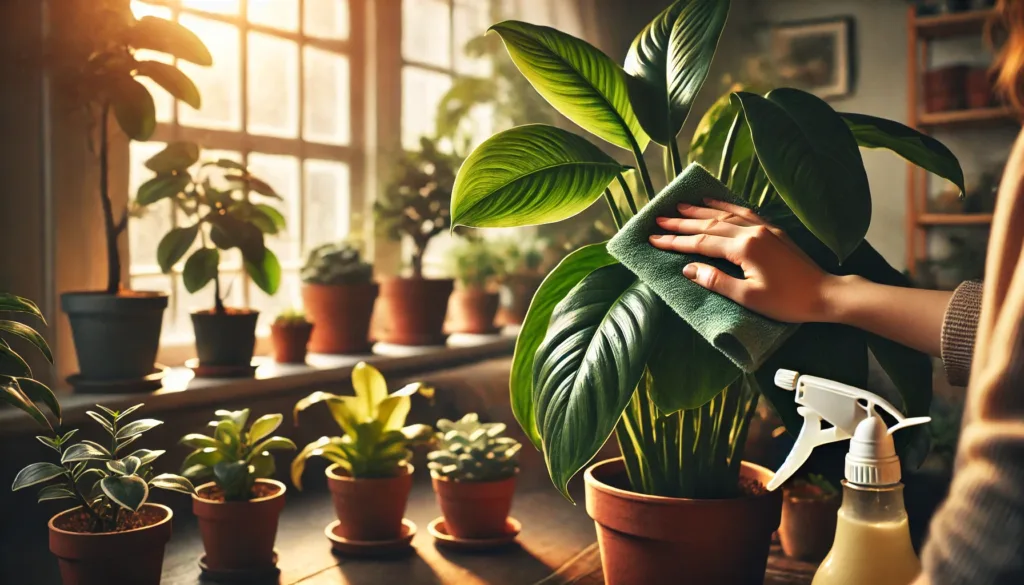
With winter fast approaching, this is the perfect time to give your plants a spring clean. when I water my plants I always give each plant a brief inspection to see if any issues need dealing with.
Make sure to check, if you can see any signs of pests by looking for damage to the leaf tissue & any discoloration on the leaves that would indicate a disease problem.
But I’m also monitoring how dusty the plant is if the plant is dust and dirt on the leaves. Then, I give them a clean with a cloth and some good old-fashioned water. I don’t use anything else.
Plants need free things to grow light, water, and nutrients. That’s all there is to it. If our plants have a thick layer of dust on the leaves then this will inhibit the plant’s ability to access sunlight and photosynthesize.
The reason is for this, the buildup of dust on the leaves will also block the pores of the plant making the plant more susceptible to disease and fungal infections. Dirty plants with a thick fly with dust and decaying debris on the soil line of the plant are ideal breeding grounds for pests.
So it’s always a good idea to keep your plant clean and tidy and none more so than in the winter.
4. Keep in touch with temperature fluctuations
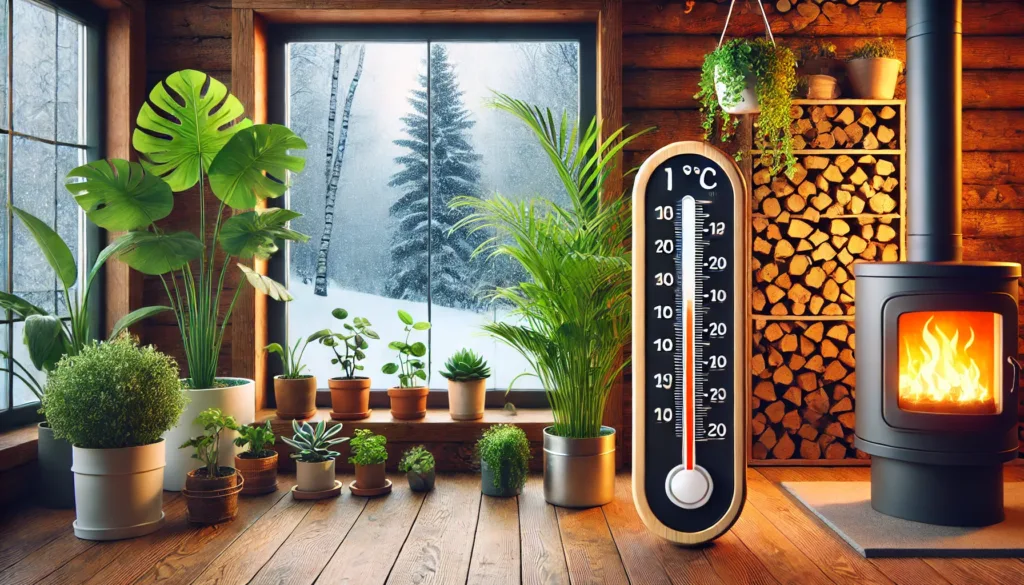
Plants are sensitive Souls. As I said earlier, they naturally live in consistently warm climates in the tropics. This means that slightly large temperature fluctuations.
This can be problematic in the winter in colder climates. It’s like getting off the plant when you’ve been on a winter holiday somewhere hot like the Bahamas. It’s a shock to the system and plants don’t like this change as much as we do.
It’s best to keep indoor temperatures at a minimum of 10 degrees Celsius and 50 degrees Fahrenheit. So if you’re going away for an extended period in the winter, try and set the minimum temperature on your thermostat. So that your plants don’t freeze while you’re gone.
If you can, keep your plants away from cold grass from doors and windows. If you keep your plant next to an open window in the bathroom, then you may want to consider moving it. So it doesn’t get regular drops in temperature.
If you live in a cold climate, then you’ll no doubt have central heating on. But be mindful of where your plants are located. Often rain radiators are located underneath windows and windowsills are prime locations for plants.
When the central heating goes on, you want to move your plants away from that space. This will only create rapid changes in temperature that the plant will hate. They’ll also lower the humidity for those plants and they really won’t be happy.
I’m lucky enough to have a wood-burning stove in my living room that I keep on during cold nights in the winter and at the moment I’ve got an Aglionema sat right above it. So unless I want to kill the plant I’ll need to move it to a new spot for the winter.
5. Carefully Check for pests
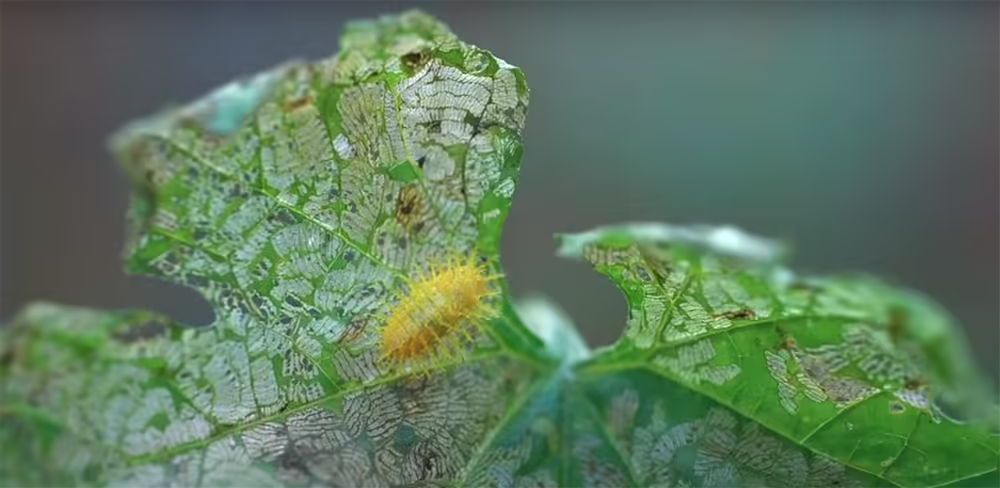
Summer is the ideal time for pests to invade your indoor plants and grow their population. So if you don’t want to have a year-round problem, Autumn is the ideal time to check for pests rigorously and treat your plants, If you have a problem.
Spider mites love dry warm conditions. That matches perfectly with homes in the winter with that lovely central heating on. Spider mites are tiny arachnids that grow massive colonies on plants If left unchecked. They suck the sap from the leaves for breakfast, lunch, and dinner and eventually cool the plant.
So check your plants for fine webbing on the underside of the leaves and spotting on the leaves. If there’s a problem, active ordinary.
Thrips are similar to spider mites & they live on your plants and die on the sap of the leaves. They don’t lay webbing, so they are harder to spot. A good way of finding out, if you have trips is to shake foliage over a white sheet of paper. If you see tiny little black specks moving around, then you probably have Thrips.
Fungus gnats seem to be a certainty in life as much as the sun rises in the East and sets in the west.
You can conquer that problem one week only to find that the buggers are back the next. They do tend to die back during the winter but come back with a vengeance in the spring.
So you might want to think about upgrading your defenses in the winter. My favorite method at the moment is, using pure cinnamon on top of the soil and it seems to be working well.
Pest will be a particular issue if you keep your plants outside during the summer and bring them in for the winter. you’ll want to be extra vigilant in checking for pests. So you don’t bring them into your home and spread them to your other plants.
6. Pruning
Winter is not really the ideal time to prune your plant for shape. This is best done in the spring when your plant is ready to push out a fresh burst of growth. Pruning for Shay means that we make cuts on stems to encourage the plant to grow in a certain direction or to get the plant to Branch out more.
Doing this in winter, won’t harm your plant. But you won’t see the results of your work until the following spring when fresh growth comes.
Instead, prune your plants to keep them clean and tidy and prevent diseases and pests from taking hold cut away diseased or damaged leaves and stems and remove debris that’s Fallen onto the soil.
7. Don’t Fertilize
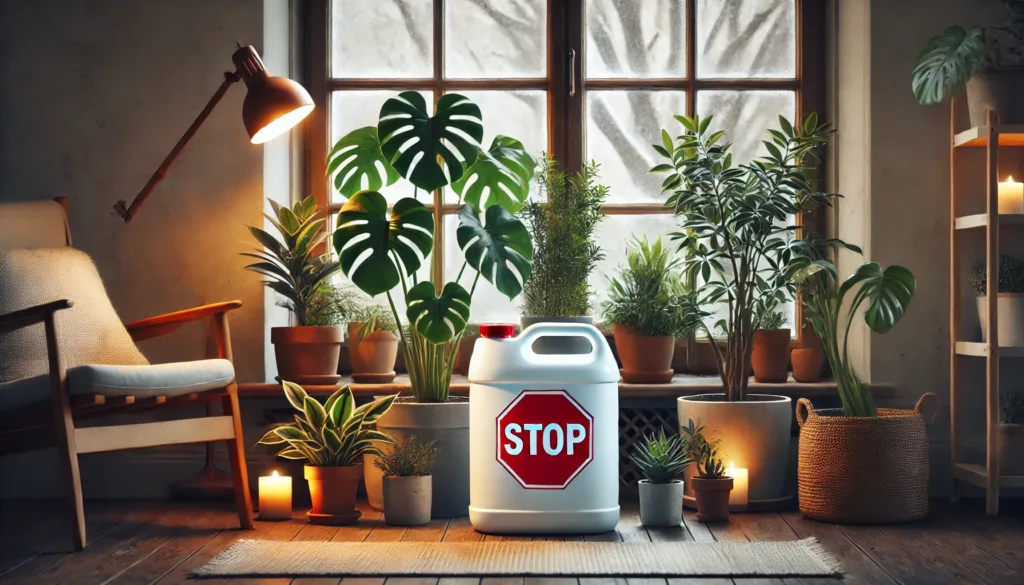
If you’re an attentive plant parent, you will have been feeding your plants regularly during the Spring and Summer. But with autumn and winter, now fast approaching you’ll need to stop. Plants need free macronutrients to feed their growth during the growing season. With little growth in the winter, they won’t use these nutrients.
Plants are simple and need free things to grow. Water, light, and nutrients. Without one of those key ingredients, your plants will stop growing. with a lack of light in the winter plants lose one of those key ingredients. So you can’t use nutrients to grow and this will lead to fertilizer root burn.
Light is pretty much the only way you’ll get your plants to grow well this winter.
See you in the Next Article.

